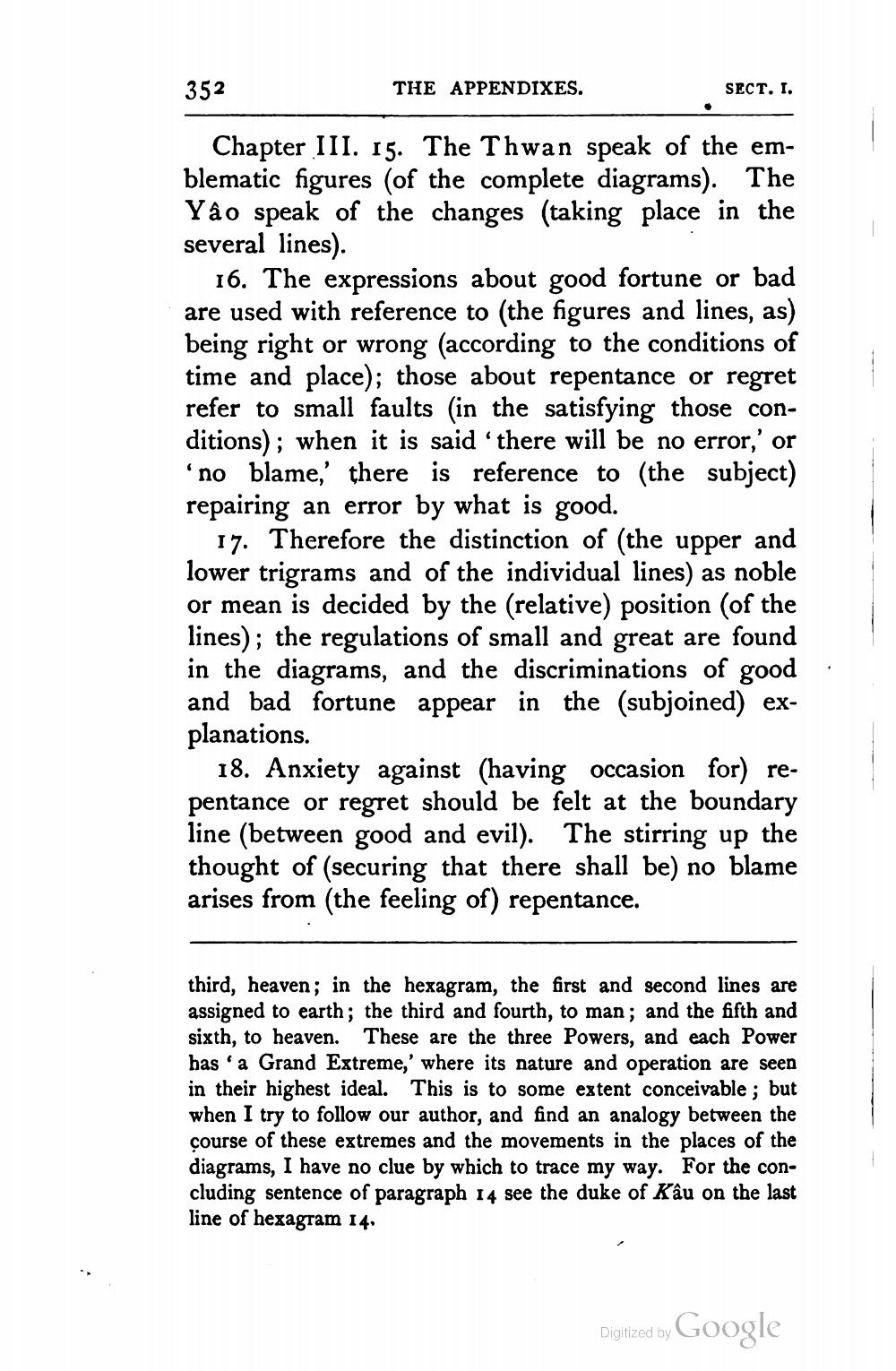________________
352
THE APPENDIXES.
SECT. I.
Chapter III. 15. The Thwan speak of the emblematic figures (of the complete diagrams). The Yão speak of the changes (taking place in the several lines).
16. The expressions about good fortune or bad are used with reference to the figures and lines, as) being right or wrong (according to the conditions of time and place); those about repentance or regret refer to small faults (in the satisfying those conditions); when it is said 'there will be no error,' or 'no blame,' there is reference to (the subject) repairing an error by what is good.
17. Therefore the distinction of the upper and lower trigrams and of the individual lines) as noble or mean is decided by the (relative) position (of the lines); the regulations of small and great are found in the diagrams, and the discriminations of good : and bad fortune appear in the (subjoined) explanations.
18. Anxiety against (having occasion for) repentance or regret should be felt at the boundary line (between good and evil). The stirring up the thought of (securing that there shall be) no blame arises from (the feeling of) repentance.
third, heaven; in the hexagram, the first and second lines are assigned to earth; the third and fourth, to man; and the fifth and sixth, to heaven. These are the three Powers, and each Power has'a Grand Extreme,' where its nature and operation are seen in their highest ideal. This is to some extent conceivable ; but when I try to follow our author, and find an analogy between the course of these extremes and the movements in the places of the diagrams, I have no clue by which to trace my way. For the concluding sentence of paragraph 14 see the duke of Kâu on the last line of hexagram 14,
Digitized by Google




